This article was medically reviewed by Luba Lee, FNP-BC, MS and by wikiHow staff writer, Glenn Carreau. Luba Lee, FNP-BC is a Board-Certified Family Nurse Practitioner (FNP) and educator in Tennessee with over a decade of clinical experience. Luba has certifications in Pediatric Advanced Life Support (PALS), Emergency Medicine, Advanced Cardiac Life Support (ACLS), Team Building, and Critical Care Nursing. She received her Master of Science in Nursing (MSN) from the University of Tennessee in 2006.
There are 14 references cited in this article, which can be found at the bottom of the page.
wikiHow marks an article as reader-approved once it receives enough positive feedback. This article received 96 testimonials and 100% of readers who voted found it helpful, earning it our reader-approved status.
This article has been viewed 6,144,114 times.
Are you looking to relieve a persistent cough as quickly and easily as possible? Coughs are usually the result of chest congestion—and while it’s uncomfortable, fortunately, there are many ways to loosen the mucus in your lungs and relieve the discomfort. Read on for a comprehensive list of remedies to clear chest congestion in the comfort of your home.
Things You Should Know
- Hydrate with water, hot tea, and other warm, decaffeinated liquids that thin out mucus. Try gargling with salt water and applying saline drops as well.
- Breathe in steam to break up mucus. Take a hot shower, do a facial steam, and use essential oils to clear your airways quickly.
- Apply a heating pad or another warm compress to your chest. Cough deeply to expel the mucus as you try each method and get lots of rest.
Steps
Expert Q&A
Did you know you can get expert answers for this article?
Unlock expert answers by supporting wikiHow
-
QuestionHow do I clear chest congestion when I have diabetes?
 Luba Lee, FNP-BC, MSLuba Lee, FNP-BC is a Board-Certified Family Nurse Practitioner (FNP) and educator in Tennessee with over a decade of clinical experience. Luba has certifications in Pediatric Advanced Life Support (PALS), Emergency Medicine, Advanced Cardiac Life Support (ACLS), Team Building, and Critical Care Nursing. She received her Master of Science in Nursing (MSN) from the University of Tennessee in 2006.
Luba Lee, FNP-BC, MSLuba Lee, FNP-BC is a Board-Certified Family Nurse Practitioner (FNP) and educator in Tennessee with over a decade of clinical experience. Luba has certifications in Pediatric Advanced Life Support (PALS), Emergency Medicine, Advanced Cardiac Life Support (ACLS), Team Building, and Critical Care Nursing. She received her Master of Science in Nursing (MSN) from the University of Tennessee in 2006.
Board-Certified Family Nurse Practitioner
-
QuestionDo the remedies for chest congestion work for nasal congestion as well?
 Luba Lee, FNP-BC, MSLuba Lee, FNP-BC is a Board-Certified Family Nurse Practitioner (FNP) and educator in Tennessee with over a decade of clinical experience. Luba has certifications in Pediatric Advanced Life Support (PALS), Emergency Medicine, Advanced Cardiac Life Support (ACLS), Team Building, and Critical Care Nursing. She received her Master of Science in Nursing (MSN) from the University of Tennessee in 2006.
Luba Lee, FNP-BC, MSLuba Lee, FNP-BC is a Board-Certified Family Nurse Practitioner (FNP) and educator in Tennessee with over a decade of clinical experience. Luba has certifications in Pediatric Advanced Life Support (PALS), Emergency Medicine, Advanced Cardiac Life Support (ACLS), Team Building, and Critical Care Nursing. She received her Master of Science in Nursing (MSN) from the University of Tennessee in 2006.
Board-Certified Family Nurse Practitioner
Warnings
- If your infant or toddler suffers from chest congestion, don’t give them medications until you’ve consulted with a physician.[16]⧼thumbs_response⧽
- Don’t drive after taking a strong medication like Nyquil. This is only meant to be taken before bedtime, so you sleep better through the night.[17]⧼thumbs_response⧽
References
- ↑ https://aspergillosis.org/wp-content/uploads/2018/11/Aspergillosis-Airway-clearance-leaflet-updated-May2016-Autosaved.pdf
- ↑ https://my.clevelandclinic.org/health/symptoms/21888-dry-cough-and-chest-tightness
- ↑ https://www.nhs.uk/conditions/chest-infection/
- ↑ https://pereaclinic.com/chest-congestion-relief-steam-therapy/
- ↑ https://www.americansinus.com/blog/essential-oils-that-help-relieve-sinus-congestion
- ↑ https://www.medicoverhospitals.in/symptoms/chest-congestion
- ↑ https://blogs.bcm.edu/2014/08/20/saline-irrigation-offers-natural-option-for-sinus-infection-allergy-relief/
- ↑ https://www.cdc.gov/antibiotic-use/colds.html
- ↑ https://my.clevelandclinic.org/health/symptoms/21888-dry-cough-and-chest-tightness
- ↑ https://my.clevelandclinic.org/health/articles/8697-coughing-controlled-coughing
- ↑ https://www.nhs.uk/conditions/chest-infection/
- ↑ https://www.health.harvard.edu/staying-healthy/what-to-do-about-sinusitis
- ↑ https://umedoc.com/how-to-get-rid-of-chest-congestion-fast/
- ↑ https://medlineplus.gov/druginfo/meds/a682494.html
- ↑ https://my.clevelandclinic.org/health/symptoms/21888-dry-cough-and-chest-tightness
- ↑ https://kidshealth.org/en/parents/medication-safety.html
- ↑ https://www.fda.gov/consumers/consumer-updates/some-medicines-and-driving-dont-mix
About This Article
To clear up your chest congestion, try taking a long, steamy shower or inhaling the steam from a bowl of hot water, which should help break up any mucus in your lungs. You can also try gargling with saline solution for a couple minutes to loosen your congestion. To make your own solution, just mix 1/2 cup of warm water and 1 tablespoon of salt. For an easy way to clear chest congestion while you're lying down, try placing a heating pad or hot washcloth over your chest for 10 to 15 minutes, which will help loosen up mucus. To learn how to get rid of chest congestion using foods and drinks, scroll down!
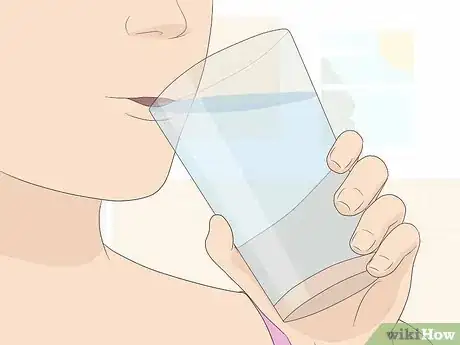

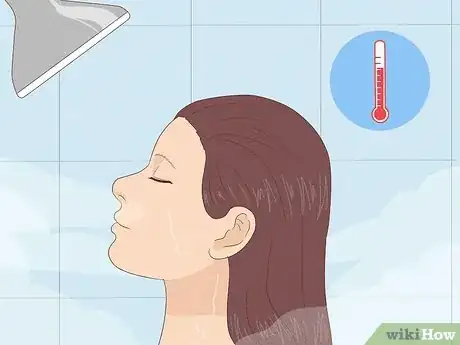
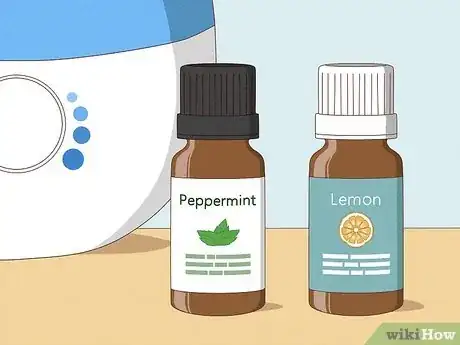
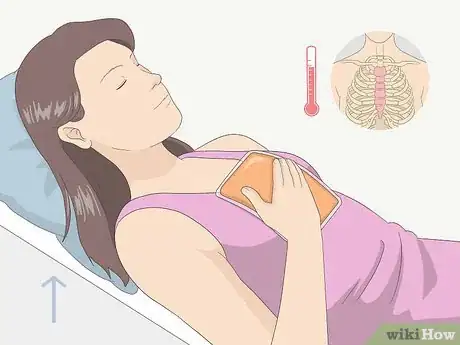
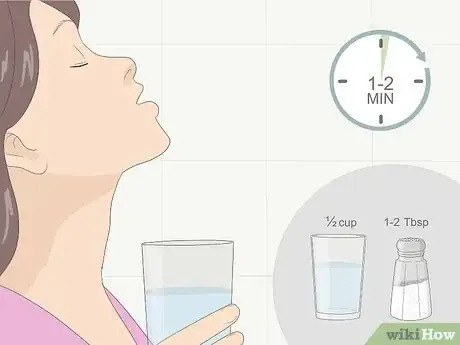
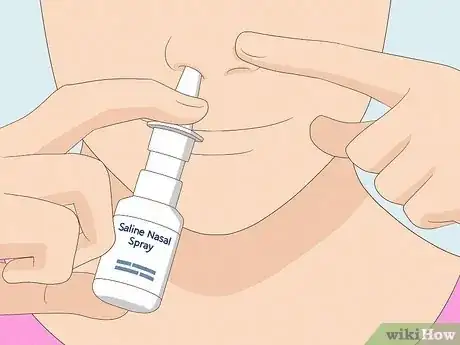
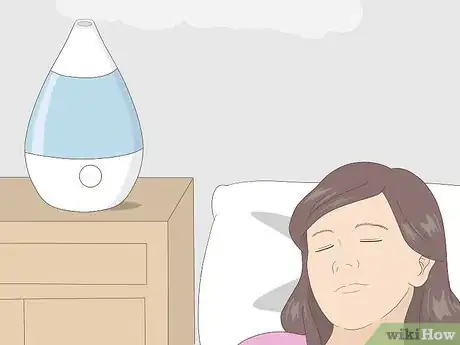
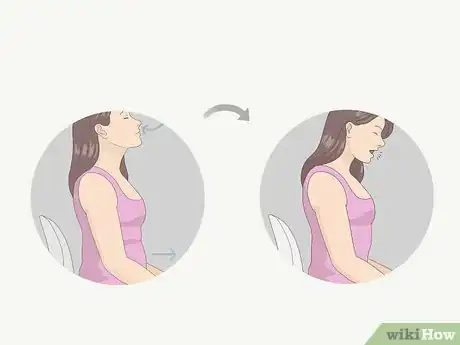

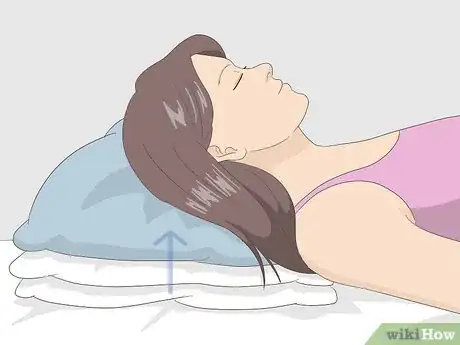
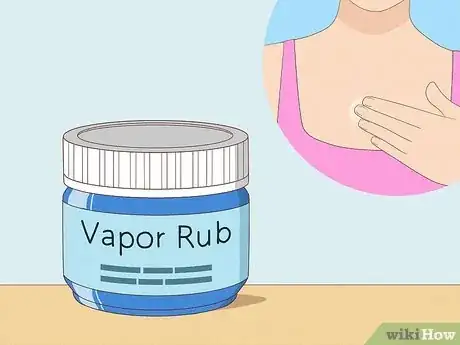
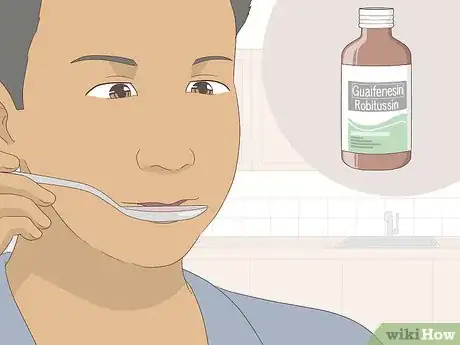
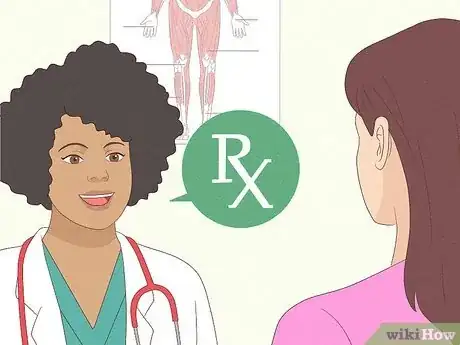
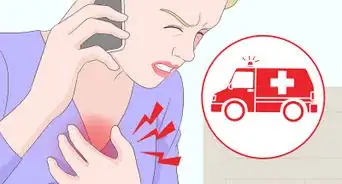








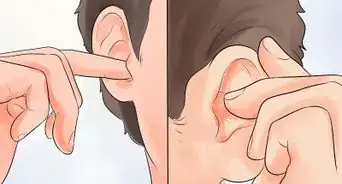
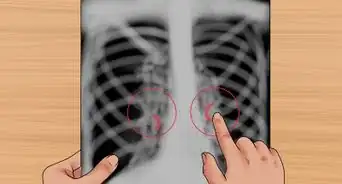


















































Medical Disclaimer
The content of this article is not intended to be a substitute for professional medical advice, examination, diagnosis, or treatment. You should always contact your doctor or other qualified healthcare professional before starting, changing, or stopping any kind of health treatment.
Read More...